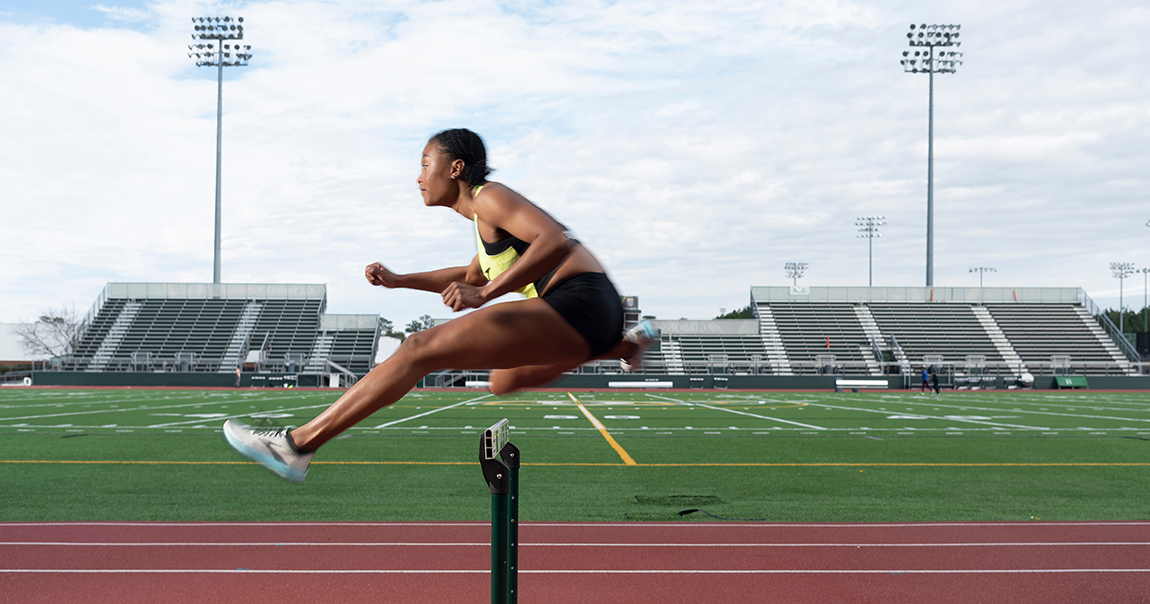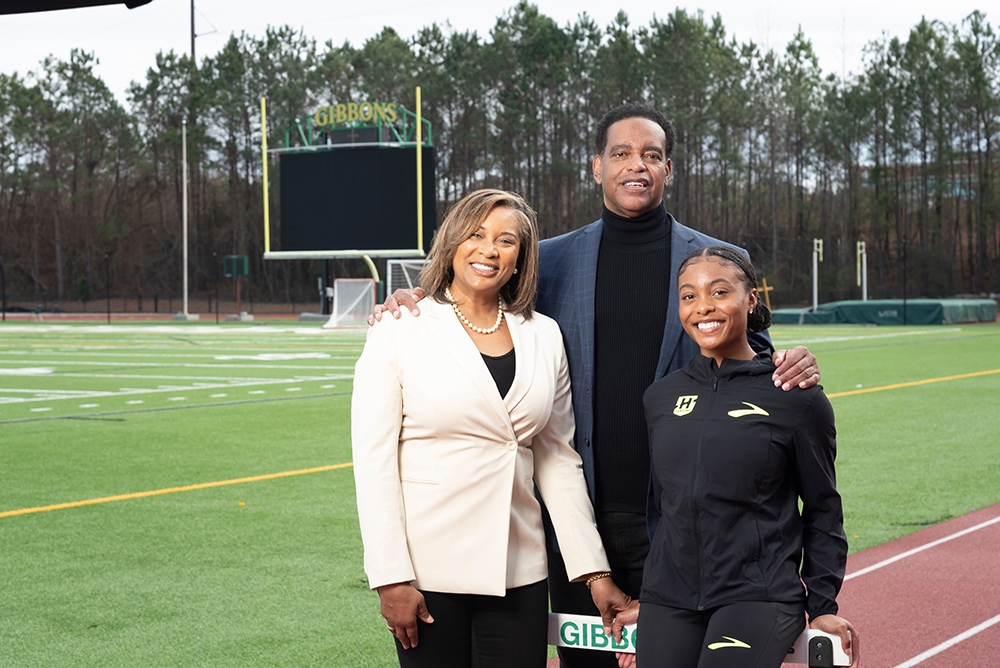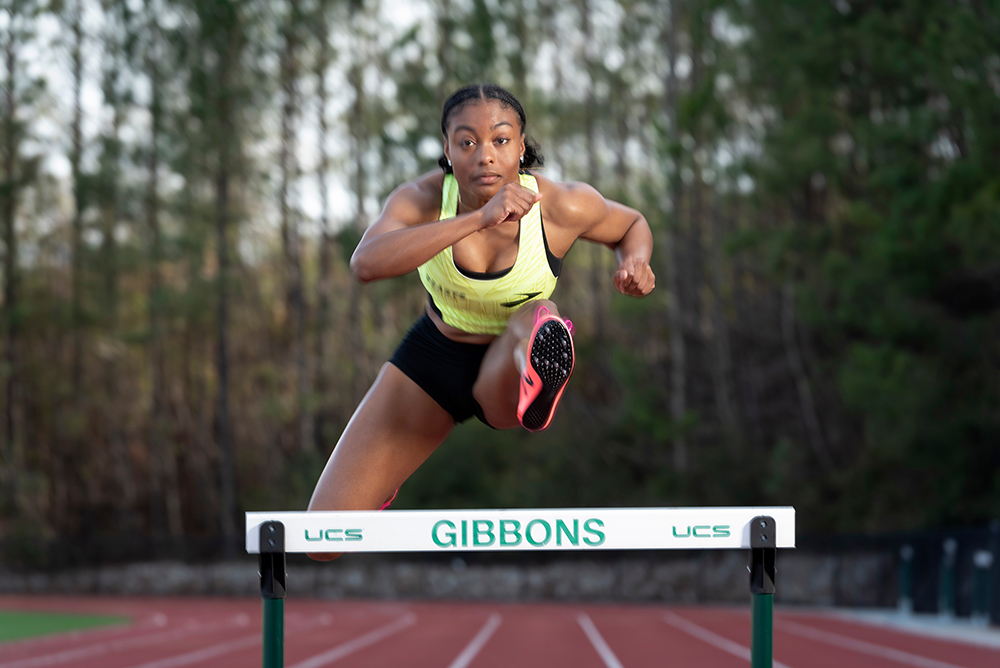
Overcoming Obstacles
An exceptional athlete powers through spinal surgery to achieve her dreams
Taylor McKinnon, of Durham, began running competitively at a young age. When she was diagnosed with scoliosis as an 8-year-old, she hoped the hours spent wearing a thoracic brace — which she nicknamed “The Horrible” — would straighten the curve in her back.
Though Taylor wore the brace nearly 23 hours a day, even sleeping in it, her curve continued to progress. At age 13, the summer before her freshman year in high school, Taylor underwent spinal fusion surgery to correct the curve.
By the time of Taylor’s surgery, the curve in her thoracic spine had progressed to nearly 60 degrees. Though concerned that her daughter would have to undergo back surgery, Taylor’s mom, Shawna McKinnon, says her main concern was how it would impact her running ability and her quality of life, especially her ability to bear a child in the future.
“Taylor absolutely loves to run, and she has been successful at it,” McKinnon says. “We wanted to ensure that for as long as she wanted, she would still be able to run.”

Taylor underwent posterior spinal fusion surgery in June 2017. This procedure involves correcting and stabilizing the spine with rods and screws. Next, surgeons fuse together the vertebrae to prevent the curve from progressing. Taylor’s spine was accessed from her back, called a posterior approach.
“All of our vertebrae have four separate joints,” explains Robert Lark, MD, MS, professor of orthopaedic surgery at Duke. “When you do a fusion, you lose the mobility of those vertebra. That's scary for people, especially people who are as active as Taylor. They think they're not going to be able to get back to doing sports or dancing or other activities that we assume require a lot of spine mobility. Taylor’s a good testament that some of those myths aren't necessarily true. With proper surgical technique and recovery, kids can get back to doing what they love.”

Achieving Incredible Heights
After surgery, patients stay in the hospital for a few days and then recuperate at home with limited movement for six weeks.
“The recovery piece was absolutely hard for Taylor, and it was hard for us,” McKinnon says. “But we persevered, and we did everything that Dr. Lark and the team encouraged us to do just to make sure that she healed properly. She was a true champion through it all.”
Taylor’s dad, Tim McKinnon, knew she was tough enough to get through it.
“I really felt like Taylor was in good hands,” he says. “Dr. Lark took the time to look at how a hurdler jumps and runs, and what muscles they use. He took time to understand her goals and her dreams of running in college or in the Olympics someday. And he wanted to make sure that she still could pursue those dreams.”
Nine months after her surgery, Taylor took first place in 100-meter hurdles at the North Carolina 4A State Championship.
“I was really hungry to prove to myself that I wasn't going to have any problems after surgery,” says Taylor, now a senior at Cardinal Gibbons High School in Raleigh. “I was going to be as fast as ever. But crossing the finish line after winning that race was crazy. It was a full circle moment of just understanding that hard work and persistence really do pay off.”
Taylor will graduate from high school this spring and plans to attend Vanderbilt University where she will continue running track and field. She aspires to become a U.S. Diplomat in Foreign Services.
“Surgery has definitely changed everything about my body, and I'm more comfortable in my own body now,” says Taylor, who won the MileSplit National Girls Performer of the Week for Indoor Track and Field in January and received the N.C. High School Athletic Association 4A Female Track & Field Sportsmanship Award last year. “It's just opened so many doors for me.”

Be a Champion for Kids
Every day we meet brave children and their families who come to Duke Children’s for hope and healing. But, we can’t do it alone.
Duke Children’s relies on the generous support of our community. Every contribution helps build a lasting foundation that enables us to achieve our mission of providing world-class clinical care to patients, achieving important breakthroughs in pediatric research, and educating the next generation of pediatric providers. Be a champion for kids like Taylor – support Duke Children’s, today.

Dr. Lark took the time to look at how a hurdler jumps and runs, and what muscles they use. He took time to understand her goals and her dreams of running in college or in the Olympics someday. And he wanted to make sure that she still could pursue those dreams.